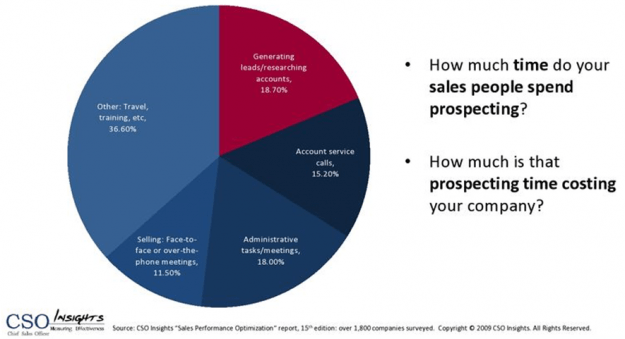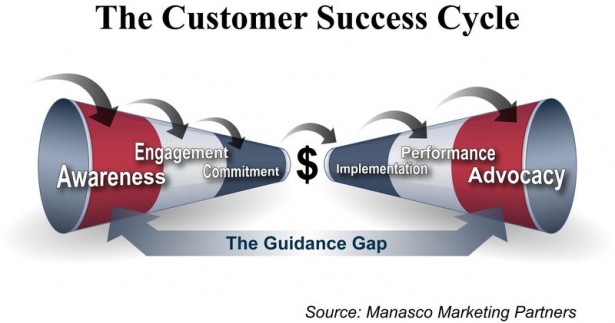White Papers
 White papers are extremely valuable assets to a company and should be constructed carefully. It’s imperative white papers include proper call to actions to appeal to the target audience. Additionally, white papers should be combined with marketing automation technology to maximize return on assets. In this article, we’ll provide suggestions on how marketing automation technology can enhance your marketing assets and provide tips and suggestions for writing great white papers.
White papers are extremely valuable assets to a company and should be constructed carefully. It’s imperative white papers include proper call to actions to appeal to the target audience. Additionally, white papers should be combined with marketing automation technology to maximize return on assets. In this article, we’ll provide suggestions on how marketing automation technology can enhance your marketing assets and provide tips and suggestions for writing great white papers.
A Study on White Papers:
Saavy B2B Marketing ran a study across 40 white papers. Results showed that only 30% of white papers had a call to action. Moreover, a recent study from InformationWeek found that 75.8% of white paper readers go to a search engine to look for more information once finished reading a white paper.
What is a white paper?
The term white paper stems from the white book, an official publication of a national government usually declaring government policy. A white paper typically argues a specific position or solution to a problem. Although white papers have roots in governmental policy, they’ve evolved into a common tool used to introduce technology and products. White papers are powerful marketing tools used to help key decision-makers and influencers justify implementing solutions.
How to outline a white paper
Building a framework for your white paper is easy. Outline your paper with the following four (skipping #3 is okay sometimes) sections to keep your readers engaged.
1) Abstract – Describe what the white paper is about in one paragraph. Do not state the conclusion here; simply tell the reader what the purpose of the paper is. Note that readers frequently scan only the abstract and conclusion of white papers, so provide material that leaves them wanting to read more and not skip ahead.
2) The Problem – Two to three paragraphs covering the problem and a little background. Be straightforward and succinct. Avoid obfuscated language and hidden assumptions.
3) Understanding the Product’s Design – Discuss how the product works in general. Do not describe how the product solves the problem; rather, orient the reader for them to understand the product’s application to the problem. Note, skip this section if you’re writing a white paper with your reader’s interests in mind, not your company’s products. If you’re looking for a more product/technology-centric pitch include this section before discussing how to solve the problem.
4) How to Solve the Problem – How the application of the solution solves the problem. Make sure to provide evidence of how the product solves the problem, and why it is the best solution available.
Ideas for white paper calls to action
What does the study in the blue box mentioned above mean to B2B marketers? First, it’s imperative to list a call to action. If you’re unsuccessful getting your readers to take the next action within a controlled environment (your company) they could wind up on the internet stumbling across your competition. Include the call to action inside your white paper as well as on your landing page.
After readers finish your white paper the suggested next step should be commensurate with where your readers are in the b2b buying process. Be sensitive to the stages your buyers are in. For example, if they’re in the beginning stages offer them educational material that’s less sales-ish. Furthermore, if your reader is the economic buyer there’s a good chance the prospect is well into the buying cycle and close to a purchase. For this reader, suggest a web page that highlights customer testimonials or invites them to work with you on building a complementary return on investment (ROI) analysis. Below are examples of call to action items:
- Microsites
- Blogs
- Twitter IDs
- Facebook website URLs
- Specific web pages / resource pages
- Books
Second, use marketing automation technology to help track your prospects as they continue interacting with other marketing assets such as more white papers, corporate website and email campaigns. Marketing automation, a feature of revenue generation software, is the glue that keeps tabs on how interested your prospects really are. Is the reader who’s downloading your white paper just looking for an education or is he really interested in your solutions and ready to speak with sales? Marketing automation will help “raise your readers (prospects) hand” as soon as they demonstrate they are “sales-ready”. Lead tracking, lead scoring and lead nurturing are three features within marketing automation that will help.
Once a reader completes a short web form to download the white paper, lead tracking will log every white paper download, web page visit, social media visit, email open and any other interaction with marketing’s assets thereafter and group these activities into a single view. The activity view is accessible through a CRM such as Salesforce.com. For a sales person, the click path and interaction with marketing’s assets is very useful to identify what the prospect is interested in and how serious they are. Armed with this information, a sales person is much more prepared prior to engaging with the prospect.
Lead scoring uses a point system to score prospects based on various demographics or interactions with marketing. For example, if the visitor read a product white paper add 10 points, if they work for a company with $50M or more in revenue add 20 points. Lead scoring establishes a scoring threshold and notifies sales whenever a visitor hits or surpasses the threshold, becoming a “hot” lead.
Finally, lead nurturing will send a series of scheduled emails based on your reader/visitor’s online behavior. For example, if the reader is an economic buyer who downloaded a white paper on the business value of your technology, you could trigger a lead nurturing campaign that sends the reader three follow up emails. The emails might include an invitation to a pre-recorded webinar on ROI analysis, a download for a ROI analysis calculator and a testimonial on another client’s ROI.
5 tips for writing successful white papers
1) Where possible, white papers should request information from the reader via a short web form. Whenever you provide something of value it’s fair to ask for value in exchange. In this case, what’s valuable is information about your reader, whom you hope to make your customer – standard quid pro quo. Marketing automation technology includes progressive profiling which reduces the number of fields users need to complete, which increases conversion/form completion rates. Progressive profiling replaces fields where information is already known with new fields allowing businesses to collect bits of information to piece together a prospect’s profile. It’s the ala carte vs. buffet version of web forms, which usually settles better in your prospect’s tummy. Additionally, marketing automation platforms include lead tracking technology which eliminates the need to ask for location, company and sometimes personal information if the reader (lead) is already in your database. Most demographics are automatically detected with marketing automation technology.
2) Accompany white papers with a landing page (content page). The page should contain a short write-up on the content of your white paper and contain a web form (with progressive profiling) for the reader to complete.
3) Content page should be SEO optimized for search engine results. If your white paper is accessible through a form embedded on your landing page always try to select the proper keyword for your material and optimize your page with those keywords. If users search the internet after reading your material you want your page to be among the results they see. This demonstrates thought leadership and uniqueness, which is important among a pool of competition on the internet.
4) Understand the disposition of your readers. The call to action as well as content should be relevant to the reader’s role. Typically, there are four types of white paper readers. Economic buyer, technical buyer, user and an influencer or coach. An economic buyer may want to see a ROI model or testimonials whereas a technical buyer may want to see technology specs or benchmarks. Each reader has a goal in mind and that goal is most likely specific to their role. If you’re using marketing automation technology, there’s a good chance the landing page for your white paper can be customized to the reader’s role. Make your landing pages as dynamic and personalized as possible.
5) Write white papers with a less formal style, little marketing-speak and lots of supporting evidence. Don’t be afraid to use an occasional analogy or two when writing your white paper. Most white papers use a very candid and pragmatic approach vs. sugar coating statements (sorry marketing). Avoid using generic marketing terms like “cost effective” or “low performance impact” and be specific with your statements to build credibility with your readers. When making statements in your white paper, look for opportunities to quote 3rd parties or statistics from other sources to gain credibility.
With an understanding of what a white paper is, how to structure a white paper, how and why to include a call to action and how marketing automation technology augments the value of your white papers you’ll be writing superstar collateral in no time. Saddle up marketing!
We welcome your feedback, comments and suggestions. What input do you have on creating great white papers?
To be alerted of future posts, please click on the RSS button.











